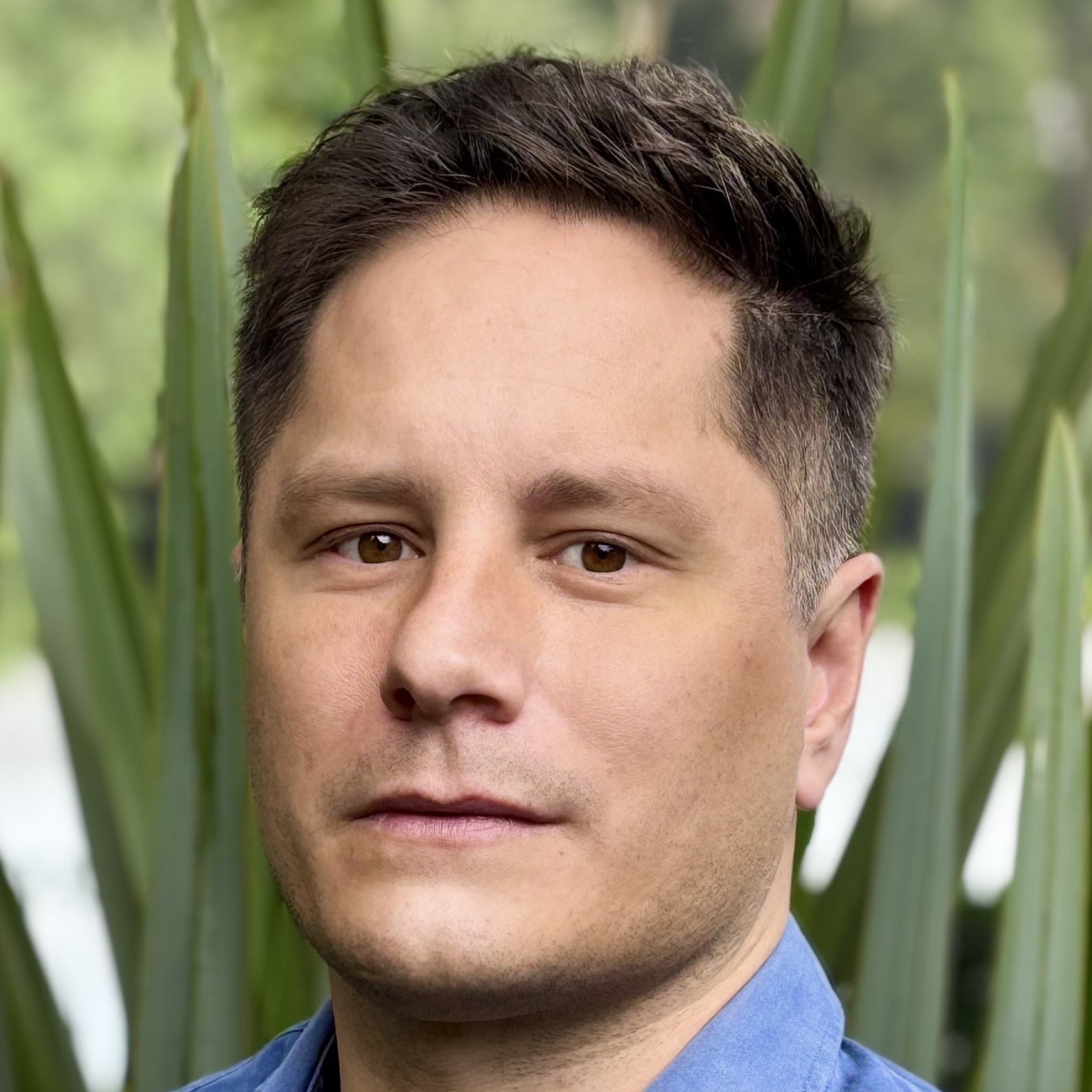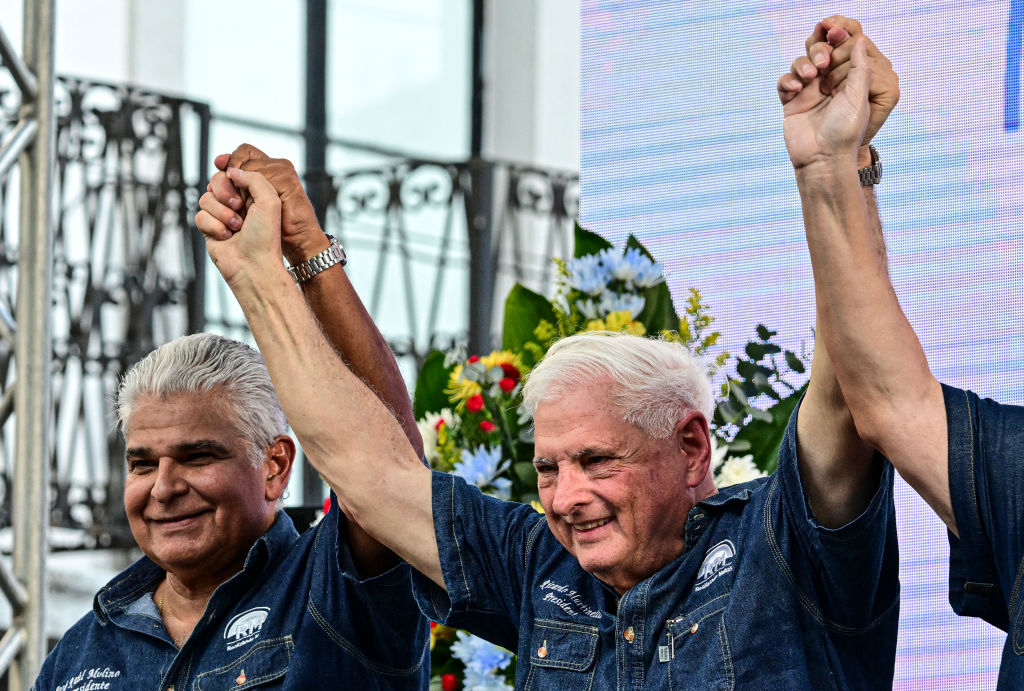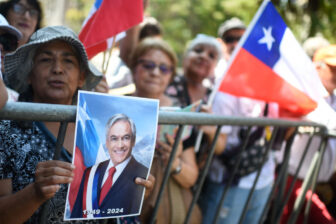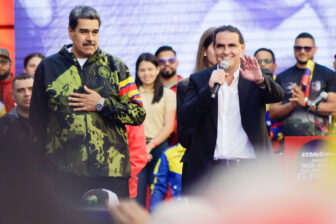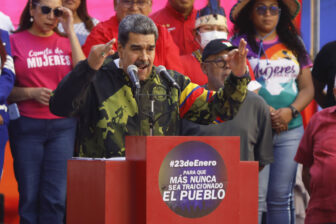PANAMA CITY — In recent weeks, Nicaragua’s tiny embassy in Panama City has been inundated with lawyers, politicians, and a troop of workmen carrying out renovations for its most famous guest. In February, Ricardo Martinelli, a billionaire businessman and former president, sought asylum there after local courts ratified his 10-year prison sentence for money laundering and declared his bid for president illegal. Ever since, through his social media and that of his dog Bruno, Martinelli has been campaigning heavily ahead of Panama’s general election on May 5.
He is backing the candidacy of José Raúl Mulino, who was his running mate before he was banned from the race and had served as public security minister during Martinelli’s administration (2009-14). Before he was banned, Martinelli held a comfortable lead in the polls, and now Mulino regularly polls 13-25 percentage points ahead of his three closest rivals: Ricardo Lombana, former President Martín Torrijos, and Rómulo Roux. Panamanian elections have no second round, meaning Mulino is likely to win the race for the Palacio de las Garzas, the presidential palace that overlooks the bay of Panama.
Less than a month before the election, the Constitutional Court is weighing whether to revoke Mulino’s candidacy as well, on what amounts to a technicality: he wasn’t chosen through his party’s primaries (as Martinelli was before his ban).
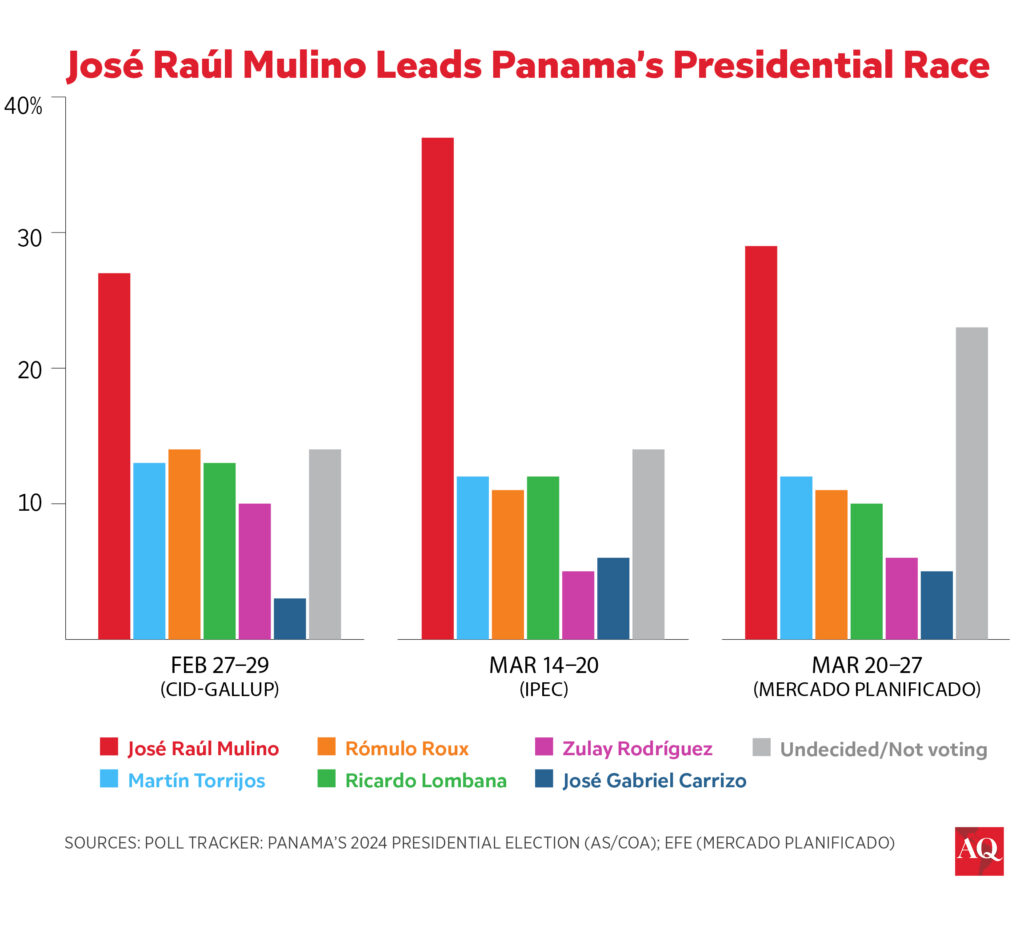
In recent weeks, his rivals have concentrated their attacks on Mulino, but he has not participated in televised debates and has largely avoided interviews. Voters have heard little about his specific policy proposals for a country facing urgent challenges. The closure of the Cobre Panamá mine is projected to inflict a 4% loss of GDP, the social security system faces an existential liquidity crisis, and external debt has risen 78% to $47 billion under the term of outgoing president Nito Cortizo. On April 1 Fitch Ratings downgraded Panama’s sovereign debt from investment grade. Meanwhile, delays to shipping due to water shortages at the Panama Canal, and record waves of migration passing through the Darién Gap have made international headlines.
Instead of policy, Mulino is leaning on Martinelli’s reputation, promising to put more chen chén—the local slang for cash—in people’s pockets. Many voters remember the economic boom of Martinelli’s presidency when GDP growth regularly topped 6% and the completion of metro lines in Panama City provided jobs and made the amenities of the city center more accessible to the urban poor. Similarly, Mulino promises 7% growth, greater youth employment, the highest minimum wage in Latin America, and major infrastructure projects. He has also vowed to help Martinelli reduce or escape his prison sentence.
However, the growth under Martinelli had little to do with his skill as an economic manager and will be impossible to replicate under a Mulino government, according to Dulcidio de La Guardia, who served as vice minister of finance under Martinelli. “Panama was riding the wave of the expansion of the Panama Canal and the investments it brought into the country, [which] gave the Martinelli administration the ability to spend and invest money that they could not have done otherwise,” he told AQ.
The second pillar of Martinelli’s popularity is his cultivated persona as a political outsider and a dedicated antagonist of the rabiblancos, Panama’s political and economic elite. In 2022 and 2023, Panama was rocked by two unprecedented protest movements. The first was sparked by the rising cost of living, deficient social services, and Panama’s reputation as one of the region’s most unequal countries, and the second erupted in opposition to the government’s rushed and opaque renegotiation of the massive Cobre Panamá mine contract.
Both movements revealed broad public mistrust of the ruling Partido Revolucionario Democrático (PRD) and the wider political-economic elite for their involvement in a slew of corruption scandals and for failing to meet the needs of the public. A 2023 survey found that over two-thirds of Panamanians wanted radical change, with corruption identified as the country’s biggest problem.
The prospect of the Constitutional Court revoking Mulino’s candidacy only adds to the impression, held by many, that the rabiblancos are unfairly singling Martinelli out. His defiant social media posts, often recorded from the Nicaraguan embassy’s home gym, pander to his image as a victim of political persecution.
“The Panamanian voter identifies with the underdog,” Miguel Antonio Bernal, a lawyer and political commentator, told AQ. “There are many voters who say, “I’m going to vote for Mulino to screw with the [political classes], because I’m tired of all this.””
Martinelli may be corrupt, but the current attempts to ban Mulino’s candidacy are an example of the Electoral Tribunal bypassing due process and bowing to the demands of the elites, according to Bernal. It represents a far wider decay of the country’s institutions, where the Congress, in particular, has been infected by money originating from drug gangs. Recently, the Electoral Tribunal expressed concern about the level of drug money in campaign financing, and last year, the National Assembly twice rejected a law giving the state greater power to seize assets from the illicit businesses.
“We’re becoming less of a society every day,” Bernal said. “After the U.S. invasion [of 1989] we were put in a zoo. Now the current government arrived and we have returned to the jungle.”
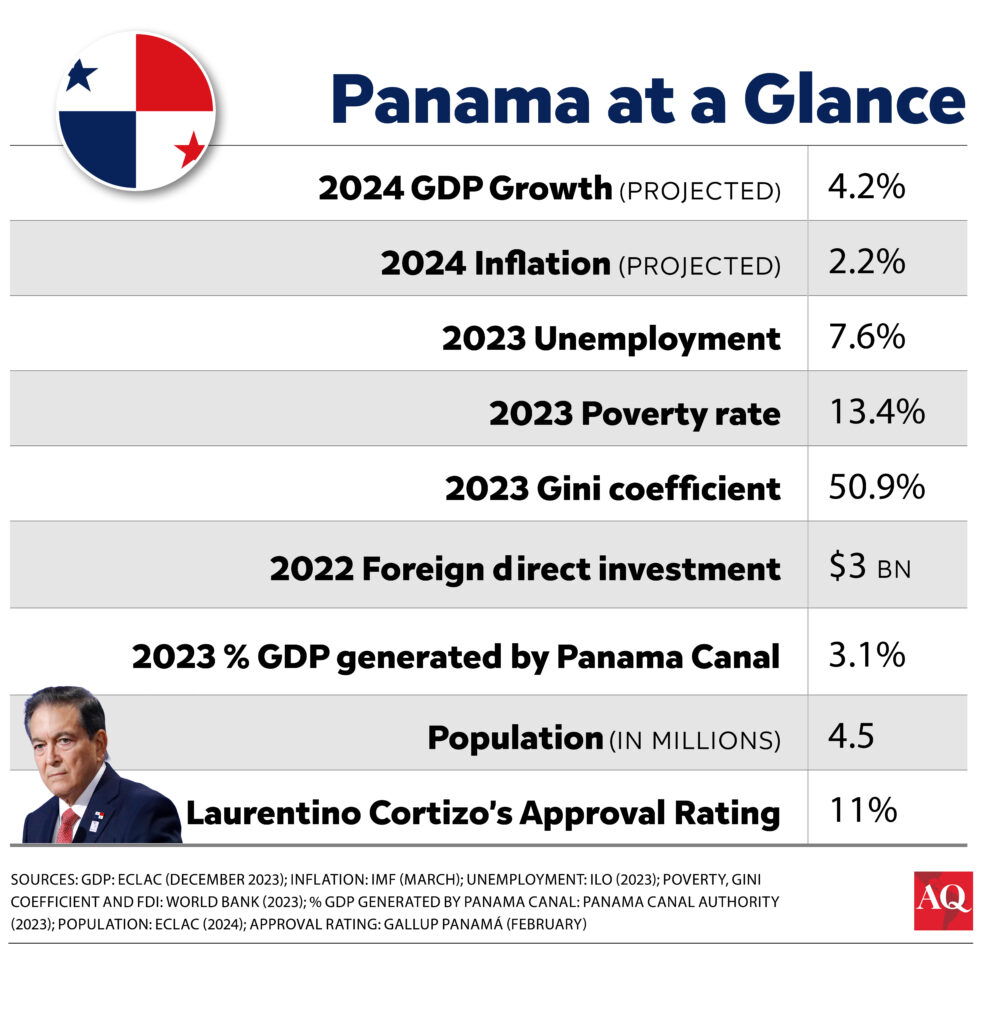
Change on the horizon
The root cause of this frustration, says Bernal, is a constitution that has not been changed since Panama returned to democracy following the overthrow of Manuel Noriega in 1989.
All the leading candidates are proposing significant changes to Panama’s constitution. Most want to introduce a second round for presidential election. Cortizo won in 2019 with a third of votes cast, Mulino could do so with just a quarter. But wider reforms will be needed to prevent the further decay of public institutions.
“A constituent assembly cannot be put off,” Ricardo Lombana told AQ, “We are at an inflection point, we can become a narcostate where dirty money takes total control…or we can make a rescue effort towards better days.”
For his part, Roux, representing the traditional Panameñista Party, has said he would call a constituent assembly “to dismantle the political system which protects and shields impunity.” Torrijos, the son of Panamanian national hero Omar Torrijos, also supports constitutional change but warned that it would not be a “panacea” for the country’s problems.
True to form, Mulino has also said he would call a constituent assembly without specifying the details. Since the U.S. relinquished control of the Canal at the turn of the millennium, Panama has seen over twenty years of strong economic growth. It remains, however, the third most unequal country in Latin America. In 2024 the country faces major economic challenges, but the political difficulties are just as serious.
—
Youkee is a freelance journalist and political risk consultant based in Panama City.

